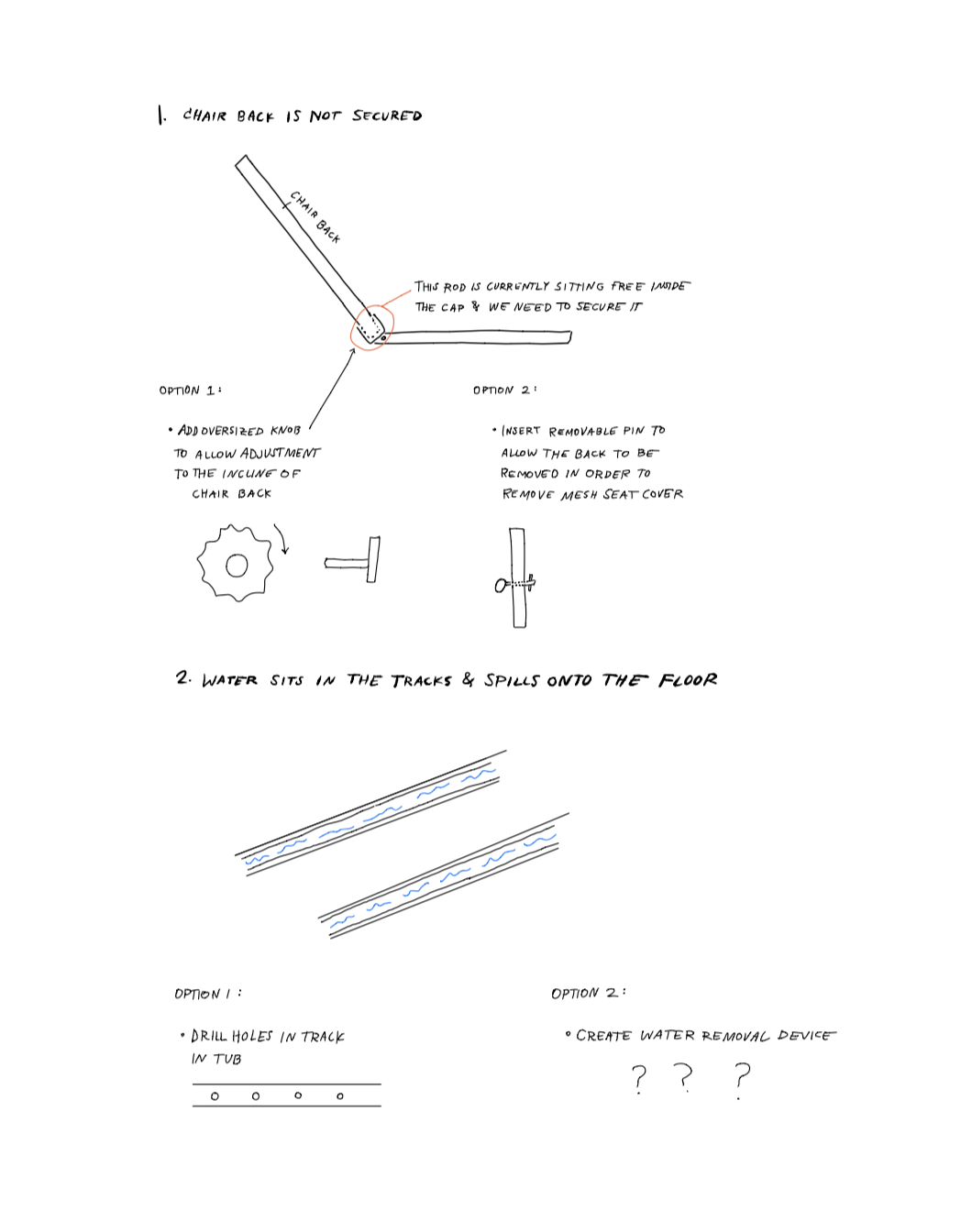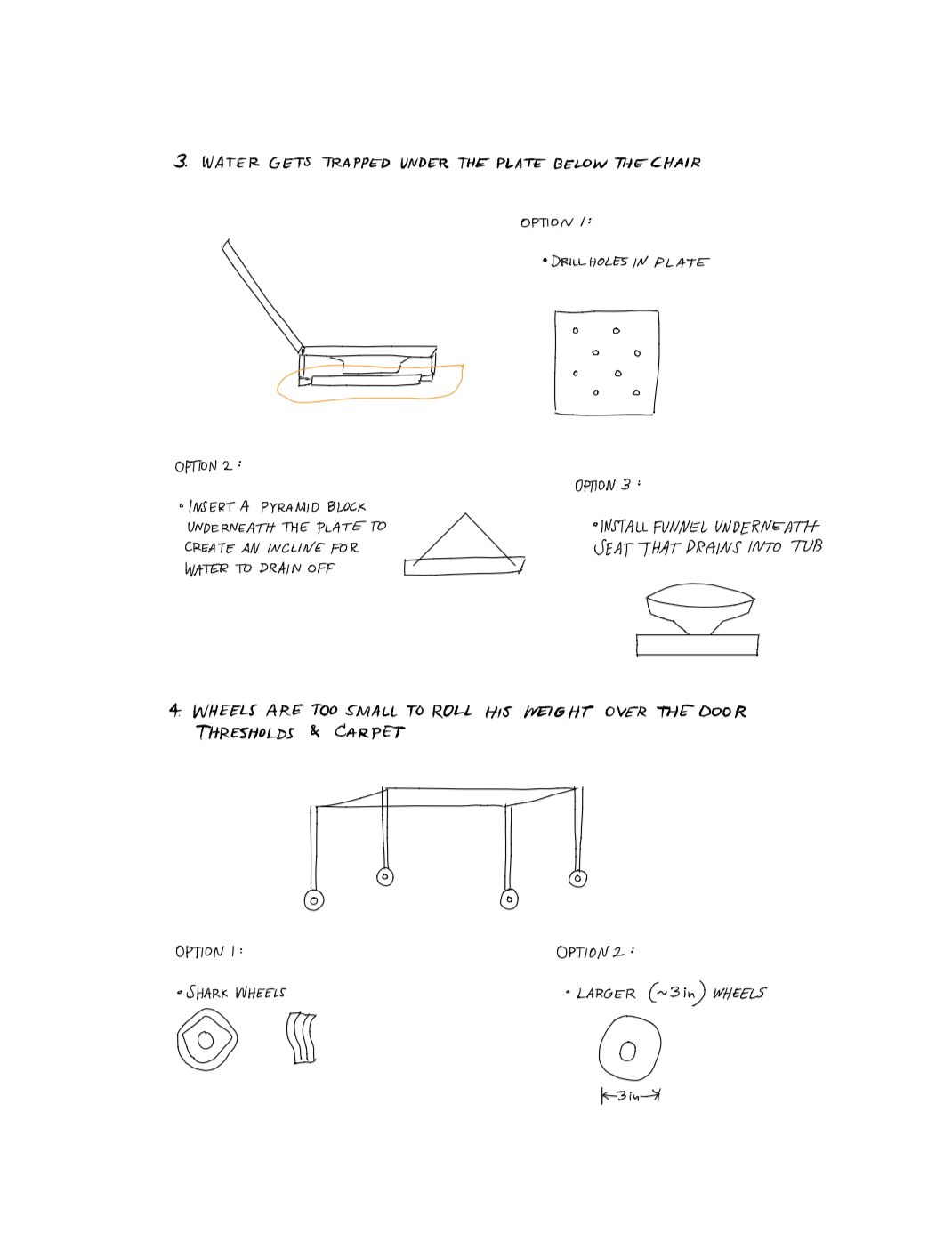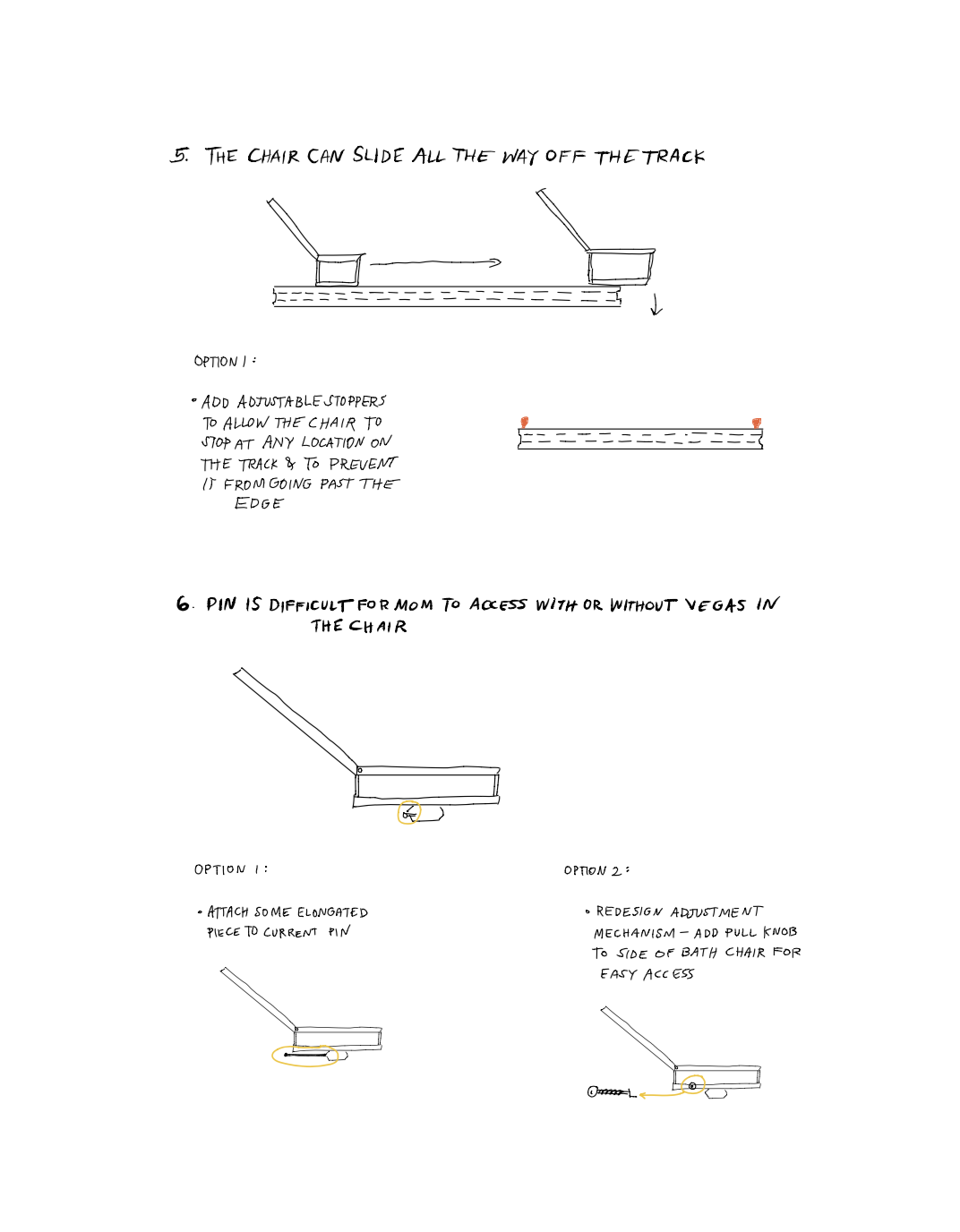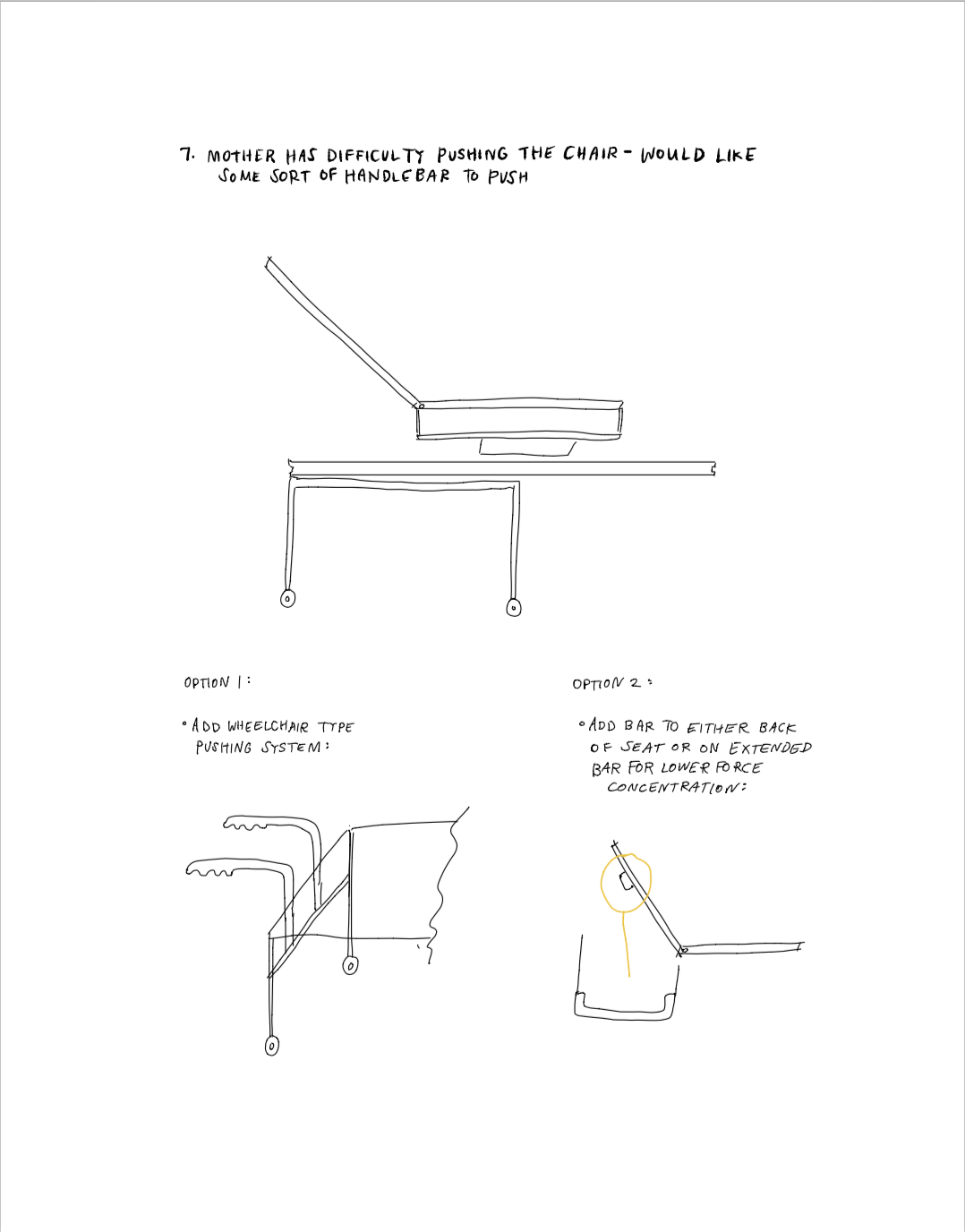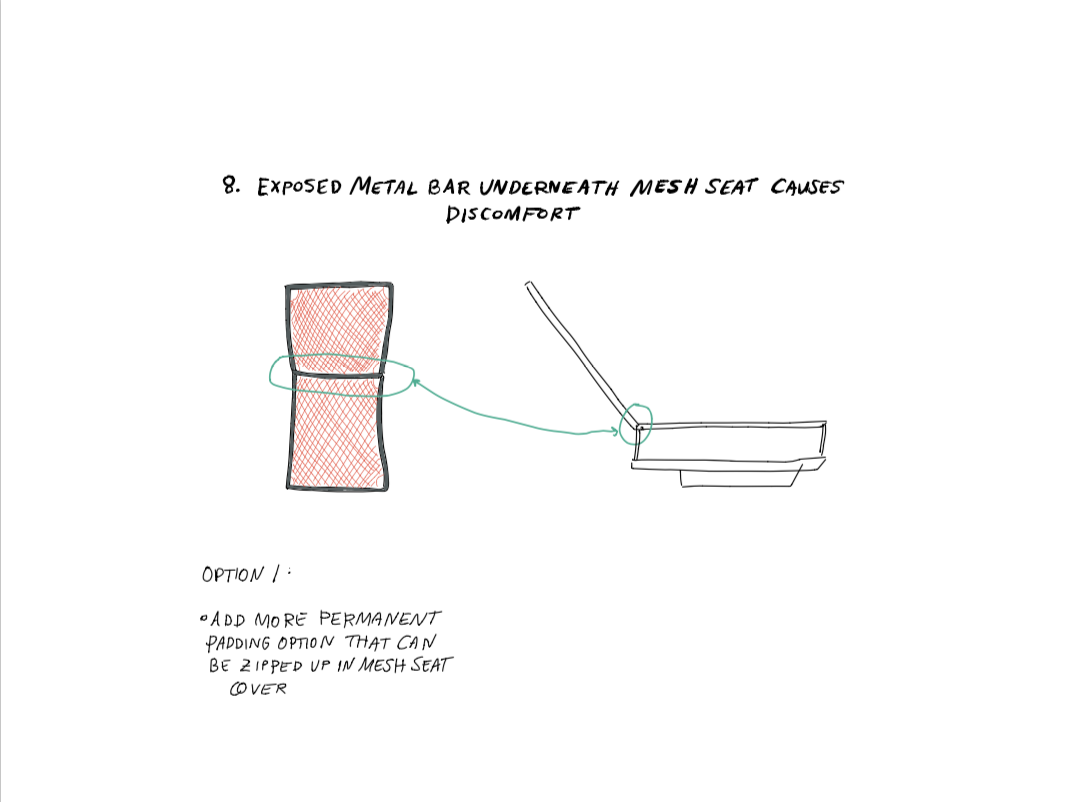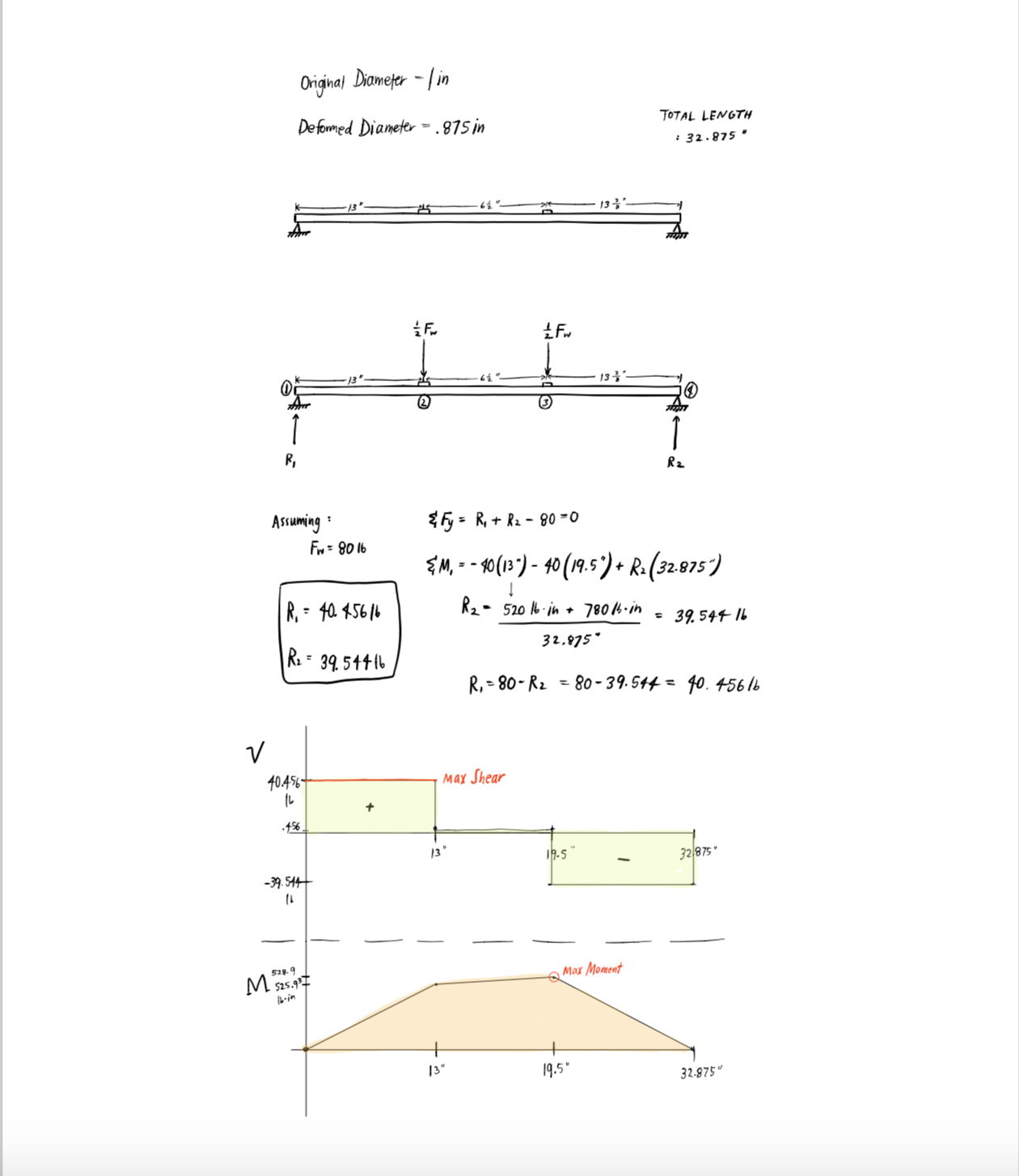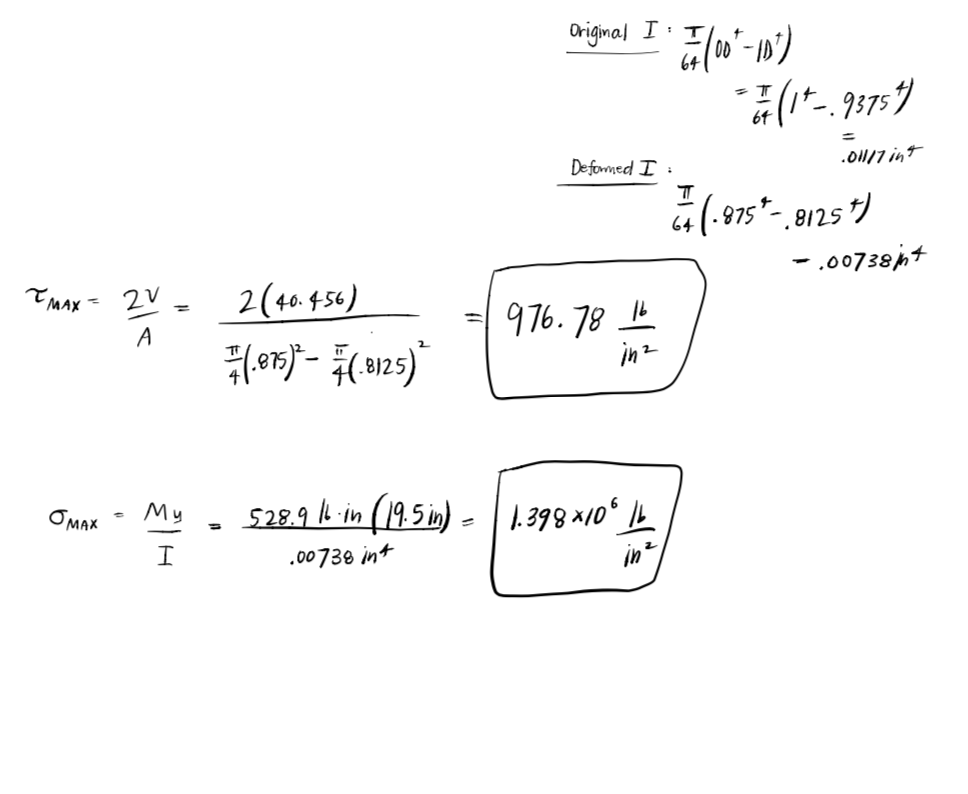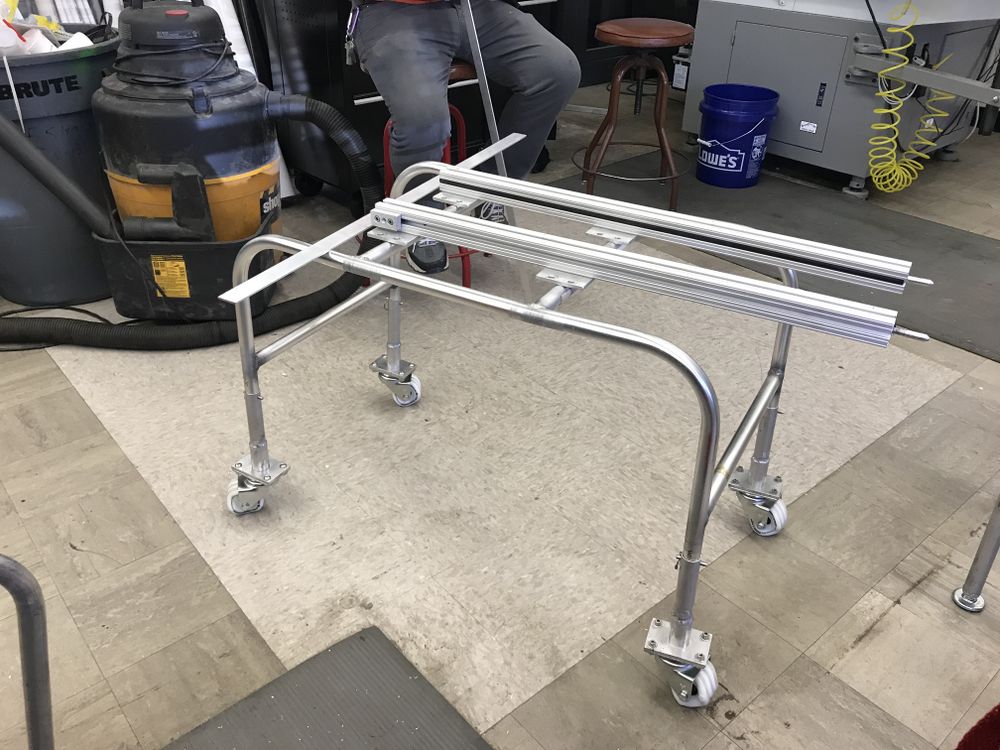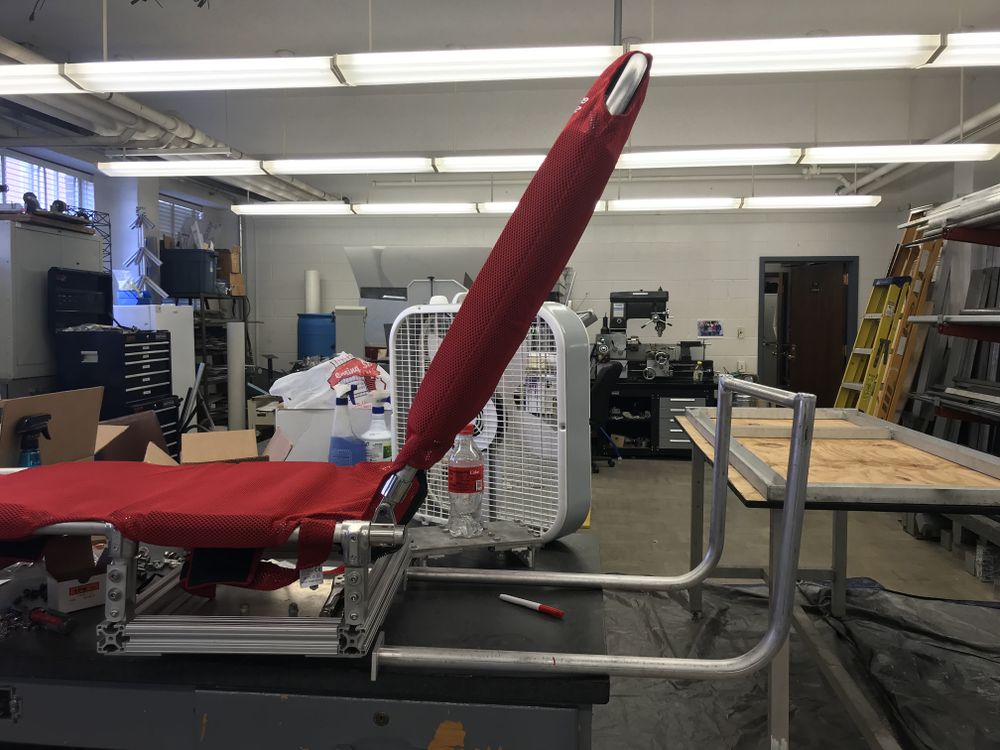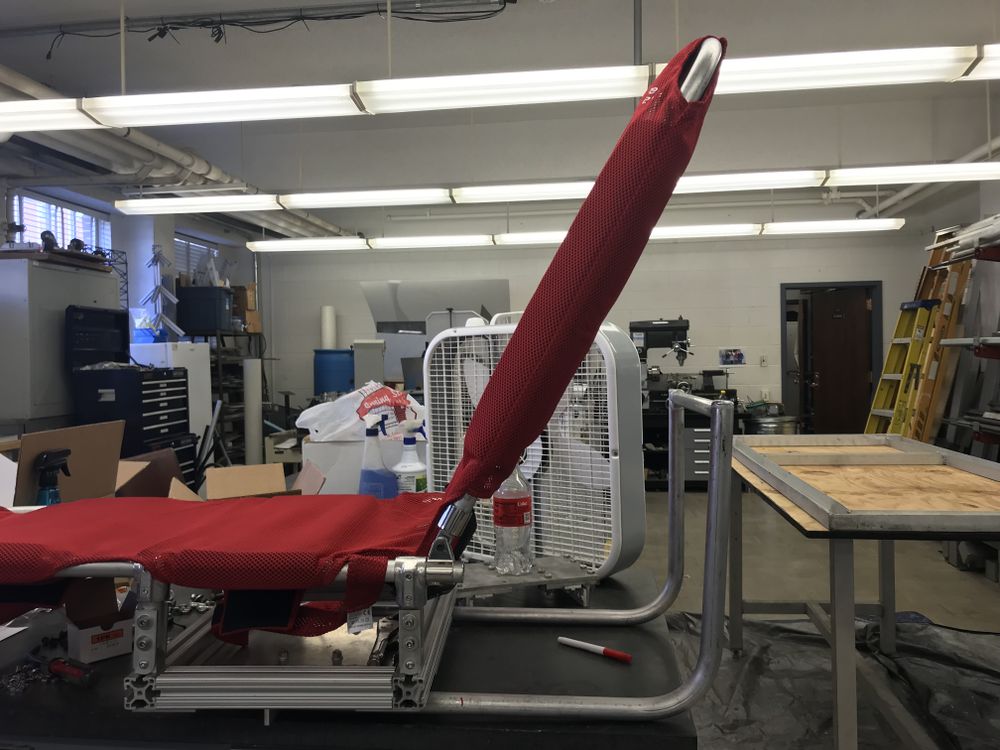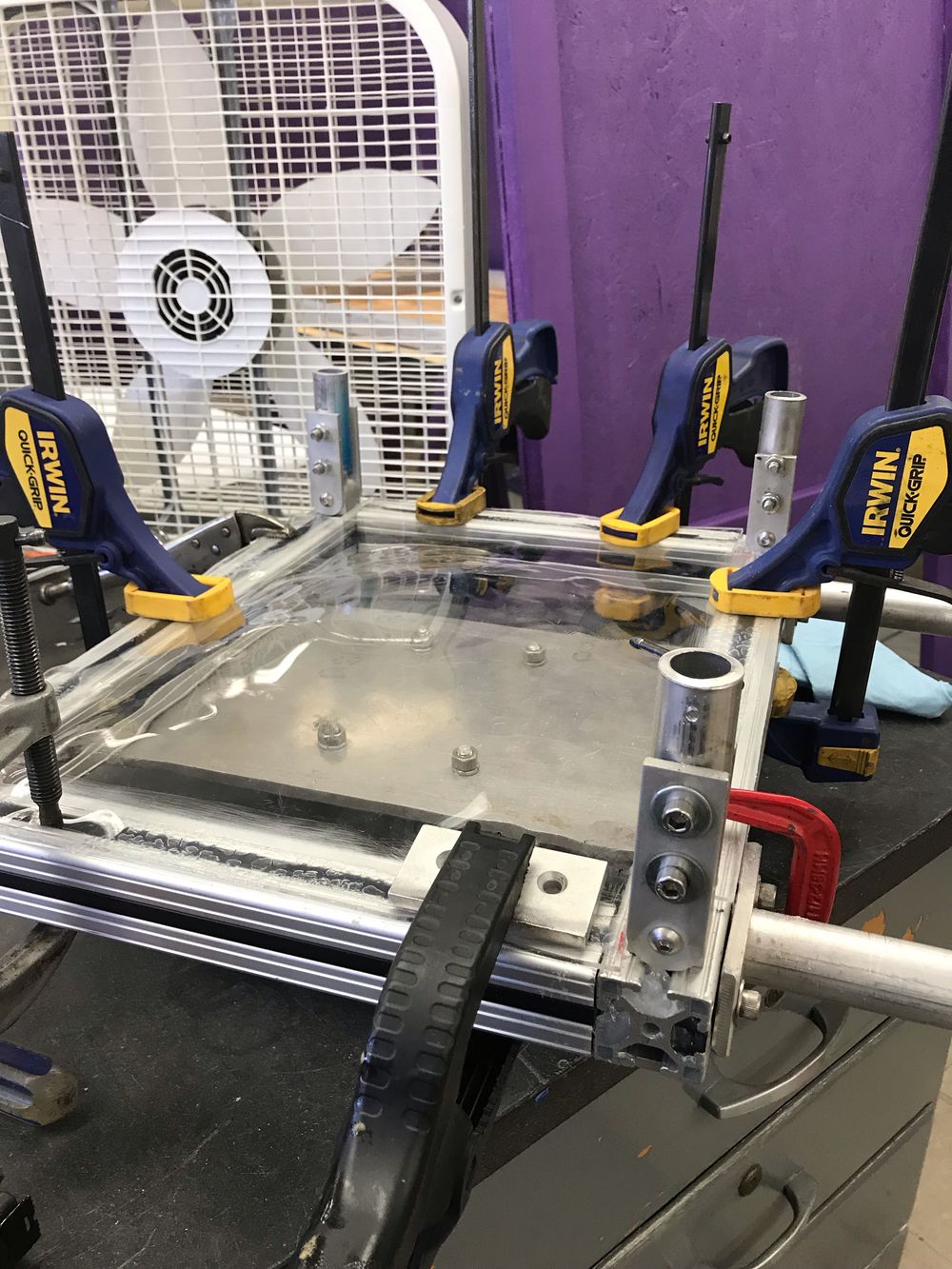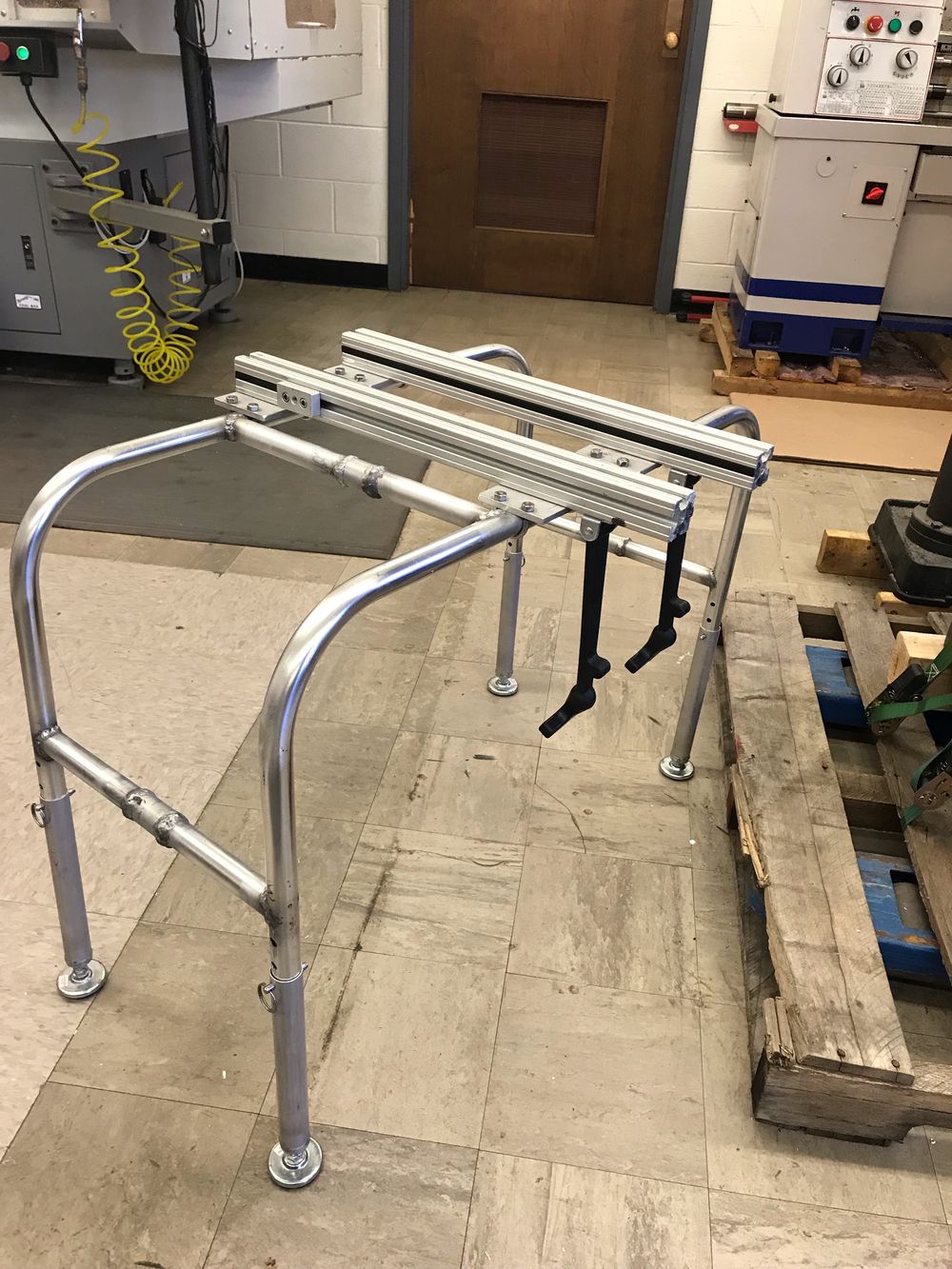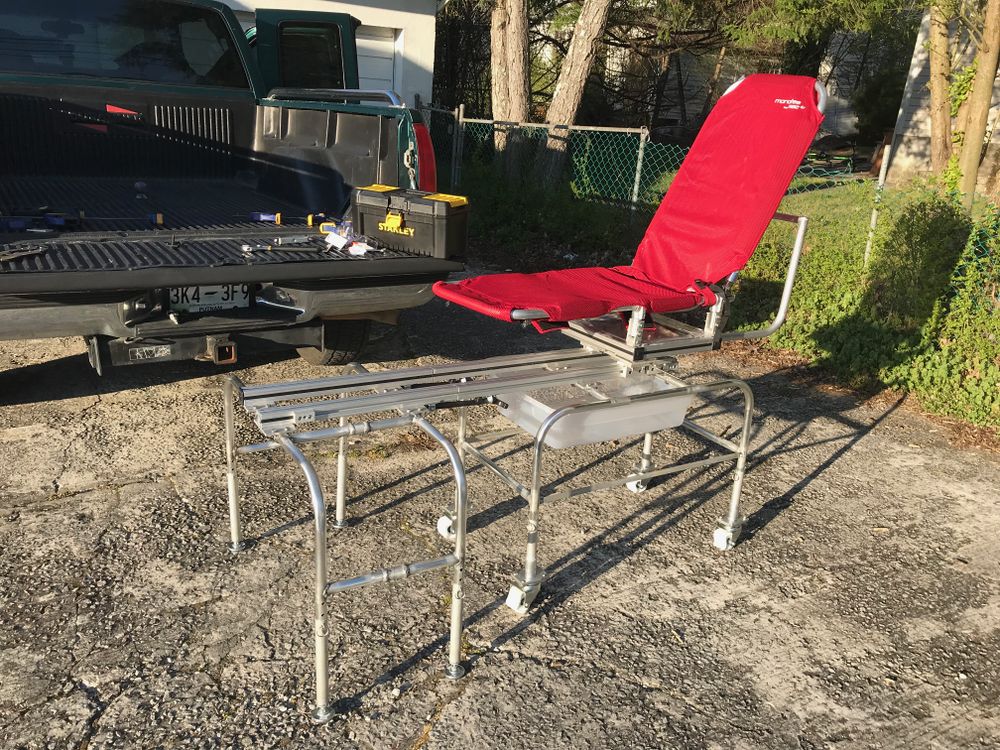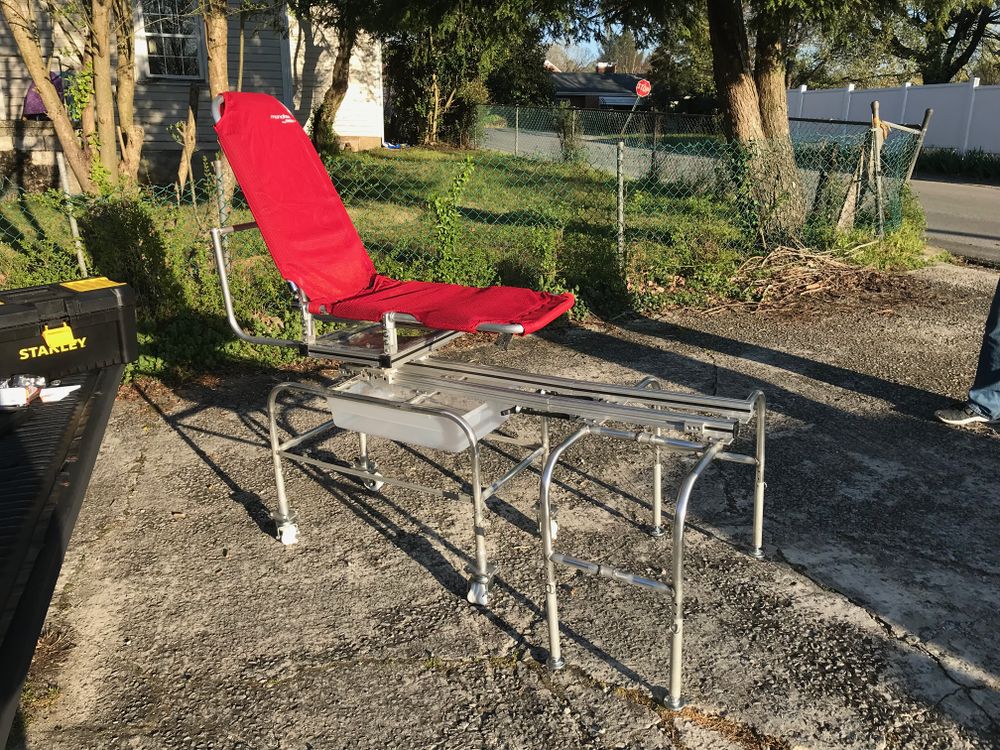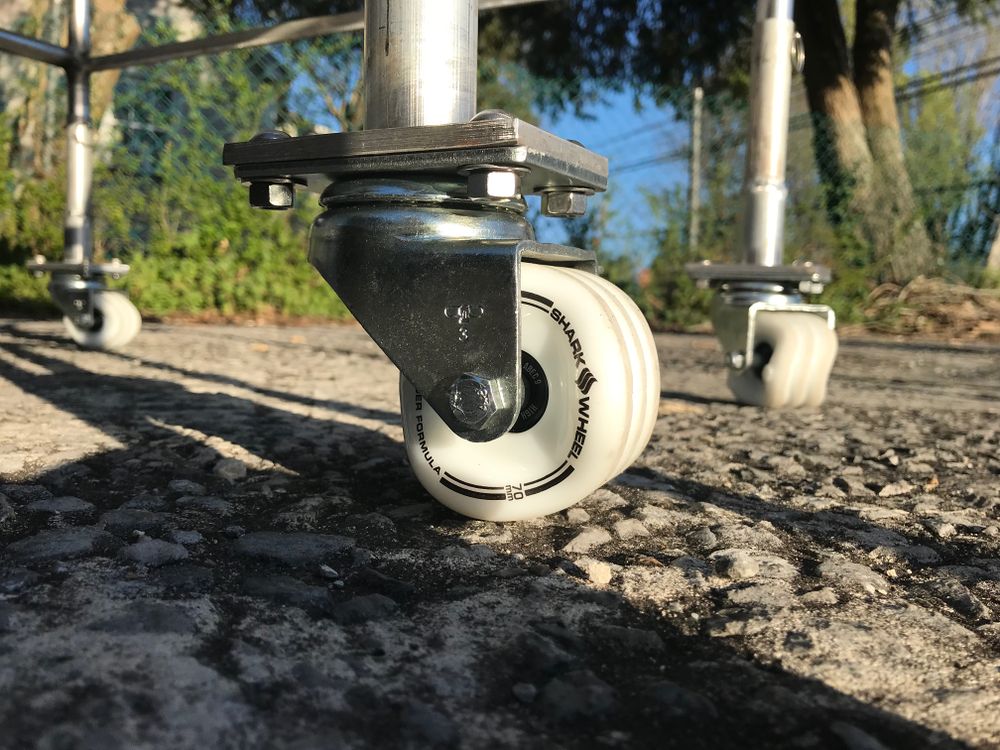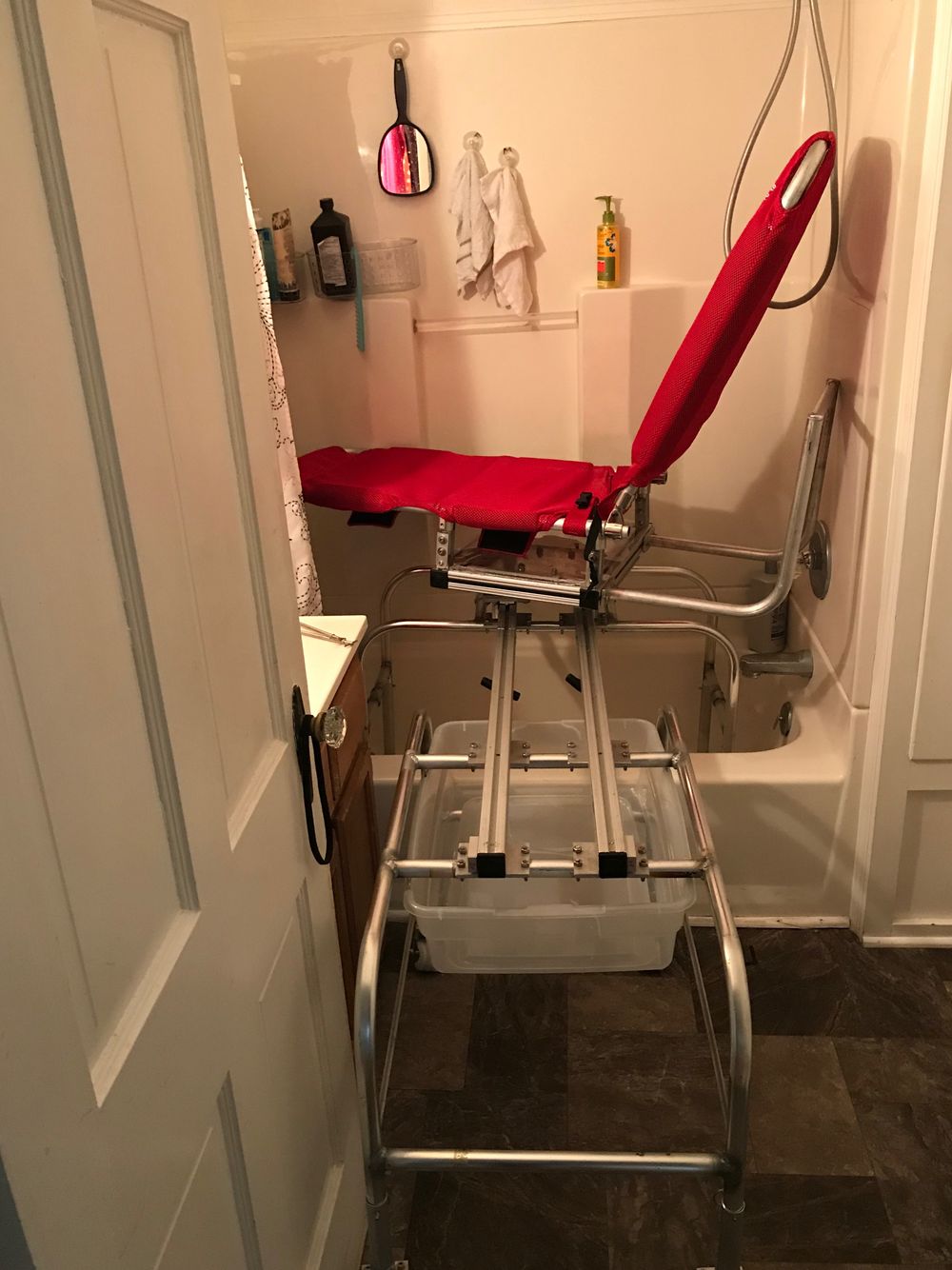Bath chair mods
Contents |
Abstract
A young boy with limited mobility was given a bath chair in the Fall of 2018 by another Dynamics of Machinery group. Our goal is to make improvements and changes to the chair to better fit the needs of the family.
Team members
- Andrew Harton, Kelsey McAvoy, Taylor Duncan, & Mary Adkisson
Acknowledgements
- Design Group from 2018, Heidi Clopton - Therapist
Problem Statement/overview of the need
Our project goal is to modify and improve the bath chair that was made for Vegas by a previous design group. We plan to secure any parts that are not properly attached, increase wheel size for mobility, create a reclined set-up for the chair to decrease water leakage, and create stoppers or an alternate back for the chair so that it cannot slide off the frame.
Design Specifications
1. Better secure back of chair
2. Create device or alter tracks to reduce water retainment
3. Alter base of the chair to prevent standing water
4. Increase size and quality of chair wheels to allow better mobility through doorways and over thresholds
5. Create stoppers to put in the tracks to prevent the chair from sliding off and onto the floor
6. Make adjustment pin more accessible for user
7. Add handle to back of the chair to make it easier for user to push/pull
8. Remove metal bar under mesh seat to relieve discomfort
Background research
1. Since one iteration of a chair has already been made, we are using it as our starting point. We will modify the chair that the family already has to meet their expectations. We have been communicating with the family and Dr. Canfield to ensure that we provide a chair that will withstand frequent use.
Conceptual Design
Evaluate concepts/select candidate
- Since our project does not have the same decision making options as a traditional project, we have chosen the paths below because they were the safest, quickest, and most cost efficient.
Detailed Design
Detailed description of selected design
- - These concepts are numbered as they are in the Conceptual Design section above.
1. Bolt the rod that runs up the back of the chair to the base of the seat to prevent it from coming unattached.
2. Add rubber hose to portions of the track that do not contribute to the motion of the chair but that hold water.
3. Add shims to the plate under the seat to encourage water to run off rather than sit on top.
4. Shark Wheels provided 4 wheels for our project for free. This was our top choice for wheels and made the cost much more manageable. They will be attached to plates on the bottom of the existing legs.
5. Attach brackets to the tracks that will catch pins on both sides to prevent the chair from being able to slide completely off.
6. Leave the chair adjustment mechanism as is, just add a longer pin for the user to reach.
7. Add handlebar to base of chair for user to push. It is being optimized for pushing and pulling and is still in the stress analysis phase.
8. The uncomfortable bar at the base of the chair will be removed. It is not load bearing and does not affect the mesh backing or mobility of the chair.
Analysis
CAD Drawings
All previous CAD drawing for our chair can be found at : http://ttu-eime.csc.tntech.edu/index.php/Bath_chair
Bill of Materials
Assembly Instructions
- See Detailed description above.
Fabrication Process
Testing and implementation
1. We tested the wheels in our shop by rolling the stand over different types of terrain. 2. The plate underneath the seat was testing for water repellency. We sprayed water over the top to ensure the slope of the dome was steep enough to shed water.
Photos of Completed design
Instructions for safe use
Do not use the device unless supervised by an adult that has been fully understood the safe use of this product.
Project Summary, Reflection
This project has provided us with a great deal of experience in the machine shop. We have learned to use our understanding of stress analysis and material properties to order and assemble different parts of our bath chair and to make decisions about how to improve parts that were already in place. We made as many changes to the existing chair that we felt we could with assured safety for the user and feel confident that future iterations of a bath chair for a person with limited mobility could be modeled after our finished product.

